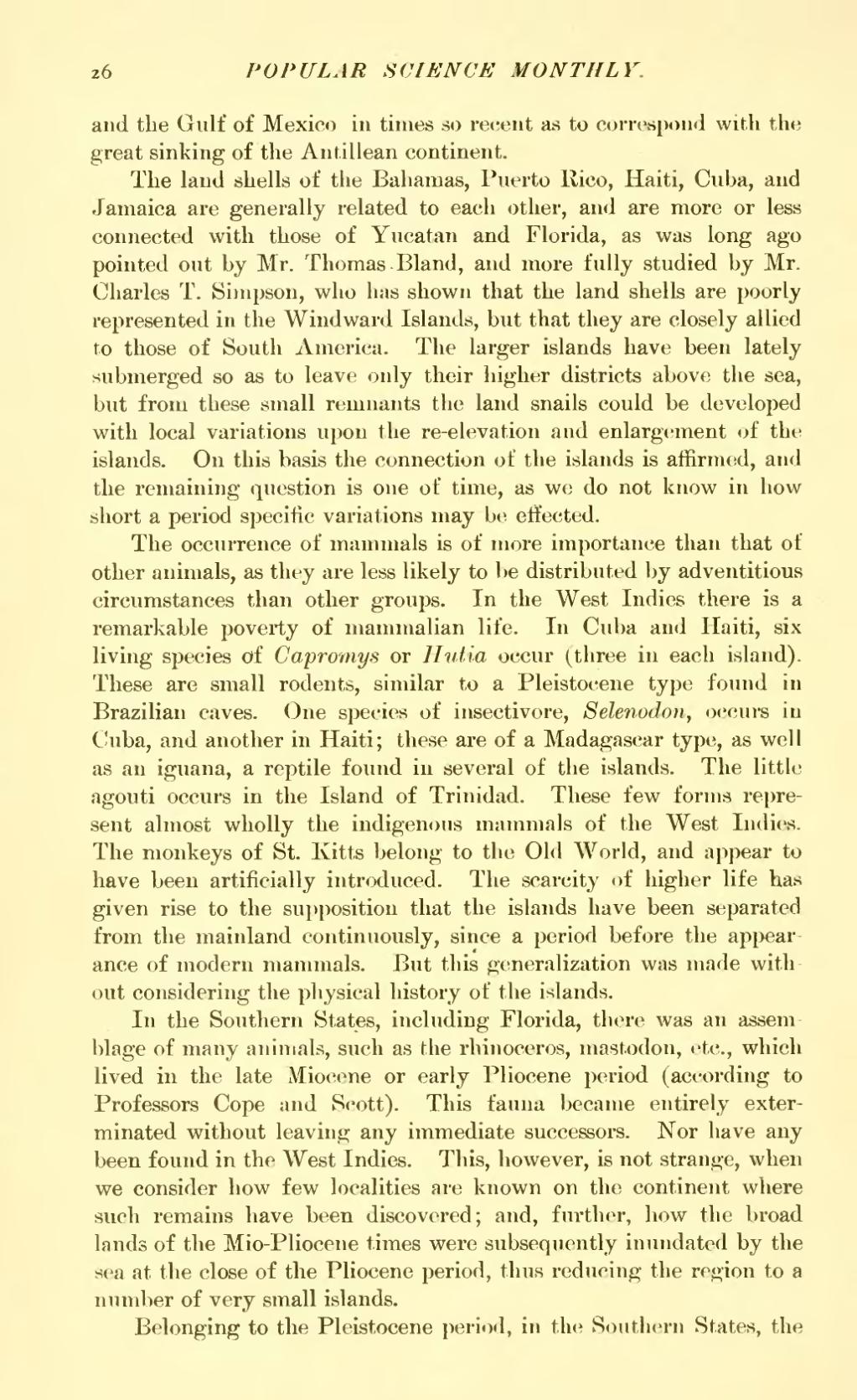and the Gulf of Mexico in times so recent as to correspond with the great sinking of the Antillean continent.
The land shells of the Bahamas, Puerto Rico, Haiti, Cuba, and Jamaica are generally related to each other, and are more or less connected with those of Yucatan and Florida, as was long ago pointed out by Mr. Thomas. Bland, and more fully studied by Mr. Charles T. Simpson, who has shown that the land shells are poorly represented in the Windward Islands, but that they are closely allied to those of South America. The larger islands have been lately submerged so as to leave only their higher districts above the sea, but from these small remnants the land snails could be developed with local variations upon the re-elevation and enlargement of the islands. On this basis the connection of the islands is affirmed, and the remaining question is one of time, as we do not know in how short a period specific variations may be effected.
The occurrence of mammals is of more importance than that of other animals, as they are less likely to be distributed by adventitious circumstances than other groups. In the West Indies there is a remarkable poverty of mammalian life. In Cuba and Haiti, six living species of Capromys or Hutia occur (three in each island). These are small rodents, similar to a Pleistocene type found in Brazilian caves. One species of insectivore, Selenodon, occurs in Cuba, and another in Haiti; these are of a Madagascar type, as well as an iguana, a reptile found in several of the islands. The little agouti occurs in the Island of Trinidad. These few forms represent almost wholly the indigenous mammals of the West Indies. The monkeys of St. Kitts belong to the Old World, and appear to have been artificially introduced. The scarcity of higher life has given rise to the supposition that the islands have been separated from the mainland continuously, since a period before the appearance of modern mammals. But this generalization was made without considering the physical history of the islands.
In the Southern States, including Florida, there was an assemblage of many animals, such as the rhinoceros, mastodon, etc., which lived in the late Miocene or early Pliocene period (according to Professors Cope and Scott). This fauna became entirely exterminated without leaving any immediate successors. Nor have any been found in the West Indies. This, however, is not strange, when we consider how few localities are known on the continent where such remains have been discovered; and, further, how the broad lands of the Mio-Pliocene times were subsequently inundated by the sea at the close of the Pliocene period, thus reducing the region to a number of very small islands.
Belonging to the Pleistocene period, in the Southern States, the
